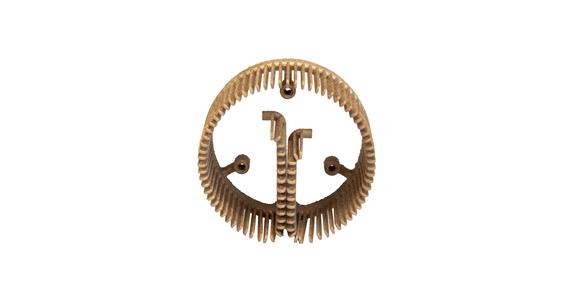With 3D printed copper parts now available from Protolabs, the realm of possibility has opened up even wider for design engineers!
Until last year if you were a design engineer wanting copper parts you had to think through your design and ask yourself whether your ideal solution was possible. Your best option to get the part designed and produced quickly was CNC machining.
While you could use 3D printing technology for other metals, copper was unattainable. When you think about where copper is used, with its high electrical and thermal conductivity, this was not ideal; but we are all constrained by reality.
Design Engineering Freedom
The good news is that technology is always moving forwards and 3D printed copper parts are now a reality, although in truth you will have to search far and wide to find a supplier.
Let us narrow that search for you. At Protolabs we have always researched and invested in the latest technology if there is a market need. It is one of the things that sets us apart.
Using Direct Metal Laser Sintering (DMLS) we can now 3D print CuNi2SiCr, which is a low alloy copper. It combines the electric and thermal conductivity of Copper with good mechanical properties and corrosion resistance. This means that you can design and use parts in harsh environments where pure copper is simply not feasible.
Using 3D printing opens up a whole host of new design options for you. Whereas subtractive manufacturing, such as CNC machining has certain restraints if you want complex geometries such as internal channels or a honeycomb structure to save weight, these design options are now very much on the metaphorical table, or your CAD system to bring us into the 21st century.
Fast Parts
Better yet, whether you are prototyping or require low volume parts, your complex design can be uploaded from a CAD model and printed quickly to produce a functional end part that can be in your hands in just a couple of days. If you are seeking the ideal part, then this gives you time to reiterate the design after testing. For low volume production or assembly requirements, it also meets even the tightest of deadlines to keep your boss off your back.

Cost effective
And if you are after low volumes or prototypes it can be more cost effective than alternative technologies. There is less need for labour and as an additive process, rather than subtractive, it uses less material and produces less waste. In fact, due to the nature of manufacture you may find that you can design parts that use less copper to save weight and retain all the functionality that you need.
Is it best for me?
While 3D printing copper opens up new design opportunities, it is not a magic bullet that will solve all of your requirements. For some projects and applications, you may find that CNC machining provides a better solution.
If you need a higher volume of copper parts, of several hundred or more, then CNC machining might be more cost effective. Also, while it is possible to design complex internal geometries using 3D printing, the tolerances using CNC machining is better, typically 0.01mm when compared to 0.1 to 0.2mm.
What if you want the best of both worlds? Well because we offer both technologies, we can post machine a 3D printed copper part using CNC machining to achieve tolerances down to +/- 0.025mm. This also means that when you talk to our application engineers, they will give you unbiased advice about the best solution for you – depending on the particular requirements of your project.